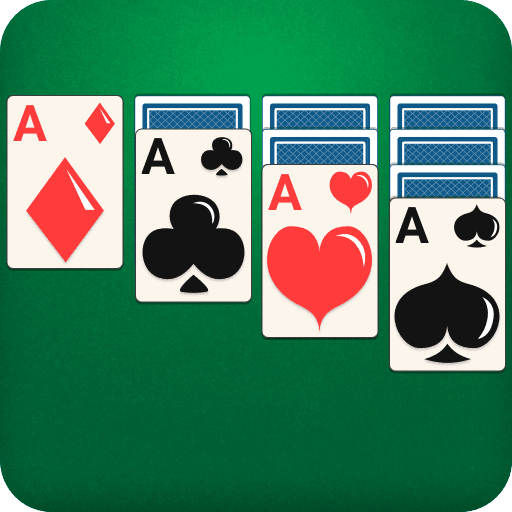2-Player card games to have fun with a friend

2-player card games are a great way to spend some quality time with a dear one while enjoying the excitement of a little friendly competition. Finding a game that suits the taste of both players is also not hard. There are several games to choose from, with different goals, rules, and levels of excitement.
If you are looking for ideas of 2-player card games to play with a friend or a family member, here are a few that might interest you.
Memory
Memory is a classic card game very familiar to all. Although its traditional version uses a standard card deck, the game has become a learning tool used by parents and teachers to help kids train their memory.
Ideally, it is a 2-player card game. More players can also be added, but the higher the number the quicker the game ends, leaving each player with less time to play.
The gameplay is simple. Lay down all the cards on the table, with their face down. Each player then turns up two cards at a time. If they form a pair, the player can collect them and have another go. If not, the cards are turned face down again.
The player who collects more pairs wins the game.
War
War is one of the most famous 2-player card games worldwide as it is fun and easy to play. The goal is straightforward: collect all the cards to win the game.
The cards are divided equally among the players. Without looking at them, they must stack them face down on the table. Then, the players draw the top card of each pile and place it face up next to the original stack. The card with the highest value wins and the player gets to collect both cards facing up and add them to the bottom of their stack. If the players draw two cards with the same value, then it’s war!
They must draw two cards from their stack and place one facing down and the other facing up on the table. The player with the highest card facing up wins the war and can collect the six cards (the two that led up to war plus the two facing down plus the ones that went to “battle”).
Egyptian Rat Screw
Egyptian Rat Screw is a game of speed. The goal is to collect the full deck, including the jokers, to win the game.
The deck is divided equally between the players, who must stack their cards facing down without looking into them. Then, each player turns up a card and places it, face-up, on a pile on the center of the table. If a player turns up a face card (king, queen, jack) or an Ace, the next player must top it also with one of these cards, and so on. When the sequence is broken, the last player to have played a face card or an ace wins the cards on the center pile and can add them to their stack.
The players can also add one or more slap rules to the game. In this case, they define a particular card and/or sequence before the game starts, and when they come up in the center pile all players can slap it. The fastest one wins the pile.
Crazy Eights
Crazy Eights can be played by two or more players. The gameplay is like UNO’s, and the goal is also to be the first to shed all the cards.
For 2 players, each gets 7 cards, and the remaining ones are placed in a stockpile. The first player puts a card face up on the center of the table. The second one needs to match the suit or the number/face. For example, if the center card is a king of spades, the player can top it with any card of spades or a king from a different suit.
The eights are wild cards. They can top any card on the table (regardless of suit and figure) and the player gets to choose the suit the next player must play.
Trash
Trash is one of the 2-player card games that can easily be adapted to more players by adding a second deck of cards. For two players, however, it only uses a standard 52-card deck. The goal is to build a layout with a sequence of numbered cards (from ace to 10).
For this game, the jacks are wild cards, and the kings and queens end the player’s turn. The remaining cards have their face values (the ace counts as the number 1).
Each player gets 10 cards and must not see them. They must lay them face down on the table in two rows of five cards each.
The extra cards are stacked face down on the table and become the stockpile.
The first player draws a card from the stockpile. If it is a numbered card, they can place it (face up) on the appropriate spot on their layout by substituting the card that is there facing down. If the replaced card is also numbered, the player can keep building their layout. They only lose their turn when a king or queen comes up or if they get a numbered card that would go on a spot that is already occupied by a face-up one. The card that cannot be played is set on the table facing up to form the discard pile.
The next player can begin their turn either by drawing from the stockpile or by taking the top card of the discard pile.
The Jacks are wild and can be placed anywhere on the layout instead of the corresponding numbered card.
1- player card games for when you are alone
2-player card games are undoubtedly fun and a great way to pass time with friends and family. However, if you find yourself without a partner or if yours gets tired of playing but you still want some more, there are also 1-player card games that you can enjoy.
Solitaire games
Solitaire is a generic name that comprises several different 1-player games (thus the name Solitaire). For most of them, the goal is to organize the cards by suit, starting with the ace and ending with the king. The cards display and the rules to move them are different depending on the game, though.
Three games of Solitaire stand out as the most popular worldwide:
Klondike - Often referred to as classic Solitaire or simply as Solitaire. The cards are laid face down on the table to form 7 columns. Starting from the left, the first column only has one card, the next has two, and thus forward until the 7th column with 7 cards. The last card on each column is facing up.
To move the cards around, the players need to create descending sequences with alternating colors (e.g. a red 5 can be placed on top of a black 6). The cards facing down can only be turned up by removing the one on top of it.
Spider - Uses two decks of cards. The cards are placed facing down on the table, forming 10 columns. Starting from the left, the first 4 columns have 6 cards and the remaining ones have only 5. Only the last card of each column is facing forward. Players can only create descending sequences with the same suit. Only completed sequences (from king to ace) can be sent to the foundations.
FreeCell - The cards are laid down facing forward on the table, forming 8 columns. The first 4 columns, starting from the left, have 7 cards and the remaining ones have 6 cards each. As with Klondike, it is only possible to move the cards in descending order and with alternating colors. The table also has 4 free spaces (cells) that can be used to store cards temporarily. The number of cards that is possible to move at a time depends on the vacancy of these cells.
Emperor
This 1-player card game uses two decks shuffled together. To set up the game, lay down a row of 10 cards facing down. Then, add two more rows facing down on top of the first one and finish with the fourth row of cards facing up. The remaining cards are stacked together to form a stockpile.
The goal is to build 8 foundations divided by suits. Each foundation must start with an ace and end with a king.
The players can move the cards around to free the ones facing down and turning them up. It is only possible to move cards by stacking them on top of others 1 rank lower and with a different color. For instance, a red 5 can be placed on top of a black 4.
When there are no more moves available or if the player chooses not to make any more moves, a card can be drawn from the stockpile. The cards are drawn one by one and can be added to the tableau or the foundations whenever possible. Only a single pass through the stockpile is allowed.
Streets and Alleys
In this game, the goal is to build four foundations, one per suit, in ascending order (starting with the ace and ending with the king). All cards are facing forward.
The game is set up by creating two columns of 4 cards each (the cards do not overlap), leaving an empty column between them. Then you deal one card per row, starting with the left column. In the end, the left column must have 7 cards per row while the right column must have 6 cards per row. The remaining cards are stacked into a stockpile.
The players must build the foundations in the empty space between the two columns. It is only possible to move the cards most outward of each row. You can form descending sequences (one rank lower over one rank higher) in each row to free the cards you need to build the foundations. The suits and colors are not important for the sequences, only the cards’ value.


